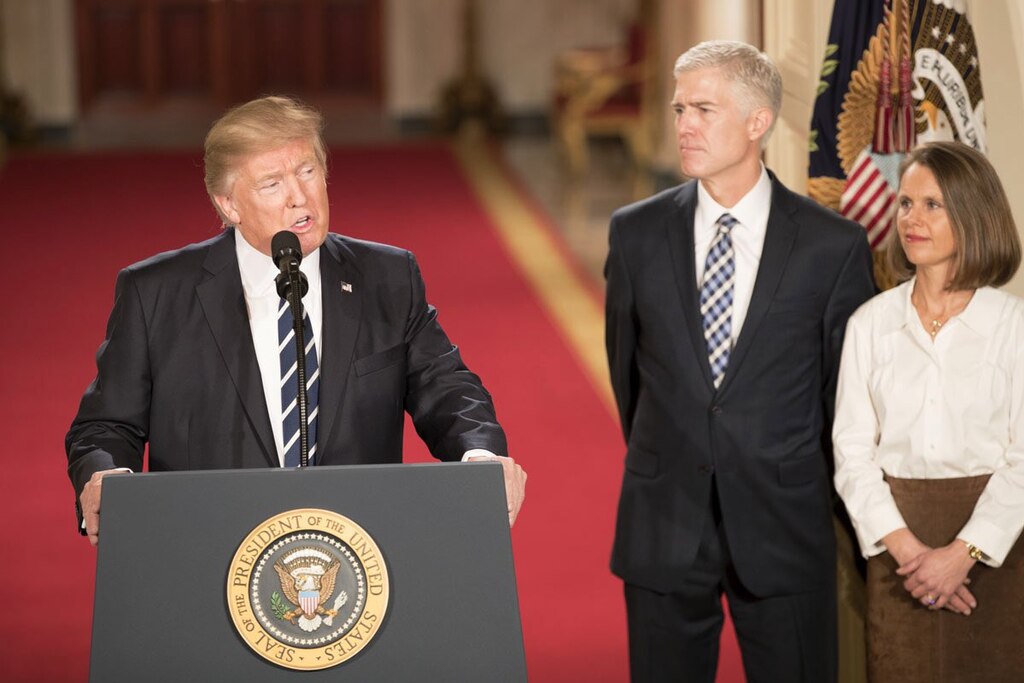President-elect Donald Trump has unveiled his proposed 2025 federal budget, outlining sweeping changes to discretionary spending and entitlements. The $6.5 trillion blueprint promises significant reductions in social welfare programs, coupled with increased funding for defense and infrastructure projects. Critics argue the plan prioritizes tax cuts for the wealthy over investments in the nation’s most vulnerable populations.
Key Spending Shifts: Defense and Infrastructure Dominate
At the heart of Trump’s 2025 budget is a 12% increase in defense spending, bringing the Pentagon’s allocation to nearly $900 billion. The proposal includes expanded investments in advanced missile systems, cybersecurity, and military readiness programs, which the administration claims are necessary to counter global threats.
Additionally, the budget allocates $300 billion for a nationwide infrastructure overhaul. This includes investments in bridges, highways, and rural broadband expansion, aimed at revitalizing aging systems and creating jobs. The administration projects these initiatives will generate millions of employment opportunities over the next decade.
“We are building a stronger America by prioritizing security and economic growth,” Trump stated during a press conference unveiling the budget.
Controversial Cuts to Social Programs
However, the budget slashes funding for Medicaid, food assistance programs, and housing subsidies. The Supplemental Nutrition Assistance Program (SNAP) faces a proposed 28% reduction, while Medicaid spending could decline by $200 billion over the next five years.
These cuts have drawn sharp criticism from advocacy groups and Democratic lawmakers, who warn of devastating consequences for low-income families and the elderly. The Center on Budget and Policy Priorities estimates that the proposed reductions could leave millions without access to basic healthcare and food security.
Education funding is also under scrutiny, with a proposed $10 billion reduction in federal student aid programs. Critics argue this move could exacerbate the student debt crisis and hinder access to higher education for low-income students.
“This budget is a direct attack on working families,” said Senator Elizabeth Warren. “It sacrifices their well-being to fund giveaways for the wealthiest Americans and corporations.”
Public Reactions on Social Media
The proposed budget has ignited a firestorm on social media, with users weighing in on its implications:
- @BudgetWatchdog: “Defense spending up, healthcare down. This budget is a moral failure. #TrumpBudget2025”
- @RealMAGAJohn: “Finally, a president who understands fiscal responsibility. Cut the waste and invest in America!”
- @CareForAll: “Cutting Medicaid and SNAP during an economic downturn? This is a death sentence for the vulnerable.”
- @DefenseFirst2025: “National security should always be our top priority. The defense budget is long overdue for a boost.”
- @StudentDebtSOS: “Education is the key to a better future, but Trump’s budget slams the door shut on students.”
- @RuralRevive: “The infrastructure plan sounds promising, but why does it come at the expense of healthcare?”
Implications for 2025 and Beyond
While Trump’s allies tout the budget as a blueprint for fiscal discipline and economic growth, critics warn of widening inequality and harm to vulnerable communities. As the budget moves to Congress for review, lawmakers face intense pressure to address public outcry and balance competing priorities.
The 2025 budget underscores Trump’s vision for his second term: bolstering defense, driving infrastructure growth, and curtailing federal spending. However, the debate surrounding its impact on everyday Americans remains heated and unresolved.



 Federal Judge Declines to Immediately Halt Trump’s $300 Million White House Ballroom Project
Federal Judge Declines to Immediately Halt Trump’s $300 Million White House Ballroom Project  Special Prosecutor Alleges Yoon Suk Yeol Sought North Korea Provocation to Justify Martial Law
Special Prosecutor Alleges Yoon Suk Yeol Sought North Korea Provocation to Justify Martial Law  Lukashenko Says Maduro Welcome in Belarus Amid Rising U.S.-Venezuela Tensions
Lukashenko Says Maduro Welcome in Belarus Amid Rising U.S.-Venezuela Tensions  Hong Kong Democratic Party Disbands After Member Vote Amid Security Crackdown
Hong Kong Democratic Party Disbands After Member Vote Amid Security Crackdown  Taiwan Political Standoff Deepens as President Lai Urges Parliament to Withdraw Disputed Laws
Taiwan Political Standoff Deepens as President Lai Urges Parliament to Withdraw Disputed Laws  Ukraine’s NATO Concession Unlikely to Shift Peace Talks, Experts Say
Ukraine’s NATO Concession Unlikely to Shift Peace Talks, Experts Say  European Leaders Tie Ukraine Territorial Decisions to Strong Security Guarantees
European Leaders Tie Ukraine Territorial Decisions to Strong Security Guarantees  Thousands Protest in Brazil Against Efforts to Reduce Jair Bolsonaro’s Prison Sentence
Thousands Protest in Brazil Against Efforts to Reduce Jair Bolsonaro’s Prison Sentence  U.S. and Mexico Reach New Agreement to Tackle Tijuana River Sewage Crisis
U.S. and Mexico Reach New Agreement to Tackle Tijuana River Sewage Crisis  Syria Arrests Five Suspects After Deadly Attack on U.S. and Syrian Troops in Palmyra
Syria Arrests Five Suspects After Deadly Attack on U.S. and Syrian Troops in Palmyra  Belarus Frees Opposition Leaders Maria Kalesnikava and Viktar Babaryka in U.S.-Brokered Deal
Belarus Frees Opposition Leaders Maria Kalesnikava and Viktar Babaryka in U.S.-Brokered Deal  Sydney Bondi Beach Terror Attack Kills 16, Sparks Gun Law and Security Debate
Sydney Bondi Beach Terror Attack Kills 16, Sparks Gun Law and Security Debate  Pakistan’s Army Chief Faces Gaza Troop Dilemma Amid US Pressure
Pakistan’s Army Chief Faces Gaza Troop Dilemma Amid US Pressure  Trump Sues BBC for Defamation Over Edited Capitol Riot Speech Clip
Trump Sues BBC for Defamation Over Edited Capitol Riot Speech Clip  Trump Orders Blockade of Sanctioned Oil Tankers, Raising Venezuela Tensions and Oil Prices
Trump Orders Blockade of Sanctioned Oil Tankers, Raising Venezuela Tensions and Oil Prices 































